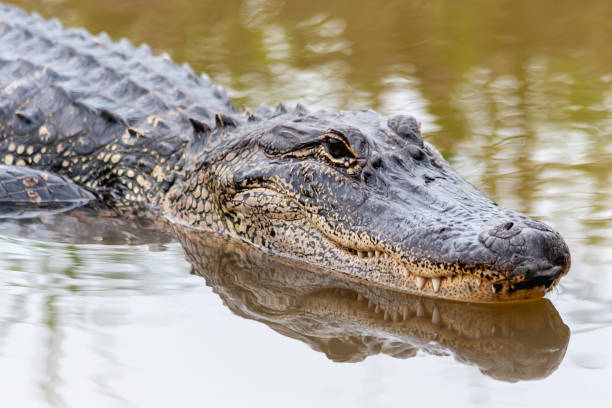
Mysterious Headless, Tailless Alligator Found Floating in Cape Coral Canal Sparks Fear Among Florida Residents
On a quiet morning in Cape Coral, Florida, residents were shocked to discover a strange and unsettling sight — a large alligator floating lifelessly in a local canal, notably missing both its head and tail. This bizarre discovery has quickly sparked fear and curiosity among the community, raising numerous questions about wildlife safety, local ecosystem disturbances, and potential human involvement.
The alligator, which is a common sight in Florida’s waterways, appeared in an unusual state. Without its head and tail, experts and residents alike have been puzzled about the cause behind this gruesome condition. The incident has drawn attention from wildlife officials, local law enforcement, and conservationists who are currently investigating the matter.
Local authorities have urged residents to remain cautious while near the canals and waterways. While alligators are a natural part of Florida’s environment, this particular case has heightened concerns due to the mysterious nature of the animal’s injuries.
Experts speculate several possibilities regarding how the alligator lost its head and tail. Natural predators such as large carnivorous birds or other alligators could be responsible. However, the precision and cleanliness of the missing parts suggest potential human interference or illegal hunting practices.
The Florida Fish and Wildlife Conservation Commission (FWC) has released a statement reminding the public about the importance of protecting native wildlife and adhering to state laws that prohibit the harm or illegal hunting of protected species.
Community members have expressed a mix of fear and fascination. Some have voiced worries about what this could mean for safety in residential areas near the canals, while others see it as a call to increase vigilance and report any suspicious activity.
Environmentalists point out that such incidents may indicate broader issues within the ecosystem, including pollution, habitat disruption, or illegal poaching activities that can threaten the balance of native species.
In response to the incident, local groups have organized educational campaigns to raise awareness about coexistence with Florida’s wildlife and the importance of conservation efforts. These initiatives aim to foster better understanding and encourage respectful interaction with nature.
The alligator’s remains have been collected for forensic examination to determine the exact cause of the mutilation. This analysis is expected to provide valuable insights that could aid in preventing similar incidents in the future.
Meanwhile, residents are advised to secure their properties, avoid feeding or approaching wild alligators, and report any unusual wildlife behavior to local authorities.
This strange and alarming discovery has not only highlighted the challenges faced by wildlife in urban and suburban environments but also brought to light the critical need for continued conservation efforts and public education on living safely alongside native animals.
As the investigation unfolds, Cape Coral’s community remains watchful, hoping for answers that will help protect both residents and the rich biodiversity of the region.
hi
BgInO ogk vVElxCt